Have you ever felt frustrated not being able to find the information you need?
- Where is the bathroom?
- How much for this shirt?
- Where is a phone number so I can talk to a real person?
Then you have dealt with Information Architecture (IA) – albeit in a less than perfect scenario. On the web, organized information can be even more important. Let me try to explain.
The Information Architecture Institute defines IA as:
- The structural design of shared information environments.
- The art and science of organizing and labeling websites, intranets, online communities, and software to support usability and findability.
- An emerging community of practice focused on bringing principles of design and architecture to the digital landscape.
Although, this definition might be accurate. It can still be a bit confusing.
The Local Library
I was recently interested in grabbing a novel to read on a planned trip. I had no idea what I wanted to read, so I headed to the library to see if anything caught my eye.
Upon entering the cool, quiet interior of the library, I was overwhelmed with choices. I tend to like quite a wide variety of books, from biographies to fantasies. Since I didn’t have a specific author in mind, the first thing I noticed was how the books were organized into categories based on genres. How handy.
I wasn’t looking for anything too heavy, so I thought maybe fantasy would be a good choice. In this section, the individual books were organized by the author’s last name, alphabetically.
Notice a pattern here?
The library has a LOT of books, and people may want to search for a volume in many different ways. This is essentially what an Information Architecture is.
Complexities of the Web
As complex as a library’s Information Architecture may seem it is actually not as complex as most websites.
For instance, I actually left the library empty-handed. To be honest, our library is quite small and does not have the best selection, but more importantly, I couldn’t find anything that I was confident would be a satisfying read.
When I got home, I brought Amazon.com up in my browser. Like the library, I was able to search for books by authors, or genres. But, I was also able to search by topic, release date, price, format, and even by customer reviews or editor picks.
To be honest, the level of taxonomies that Amazon deals with is quite staggering. There would be no way for the average user to find anything on the site if they had not employed a very good Information Architecture – one that can get out of the way and let the users use it intuitively.
An Emerging Community
When was the last time you searched for something on the web? That single search of yours was only one of 2 million searches received in that same minute. And the amount of data being published in that exact same minute is mind-boggling: Facebook users alone will have posted 684,478 pieces of content.
To say that your content needs to be organized is a huge understatement. Not only are we talking about Big Data but we are talking about BIG MONEY. In that same minute, online shoppers spend an average of $272,070 or $391 million every day.
Conclusion
So what is a fella to do? After all, this sounds like a huge job. Well, it can be. But, the good news is that if you just get started you will already be one step ahead of the rest. Simply by using some of the built-in tools in your CMS, you will be able to organize your content. The important part is to be thinking about organizing your website as soon as the content is created.
If you are expecting a lot of data, then I would highly recommend reaching out to a professional. An experienced Information Architect will be able to organize your content in an intuitive manner, allowing for a more enjoyable experience for your users and ultimately a better website.





